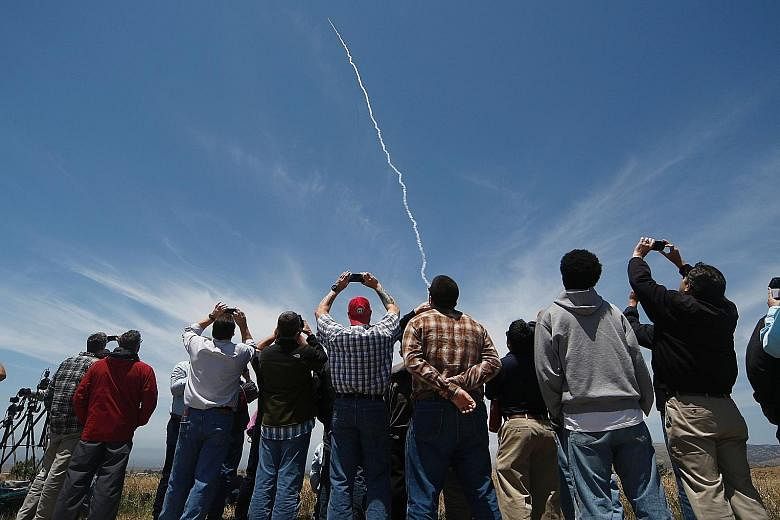WASHINGTON • Technology for ballistic and cruise missiles is advancing in countries from North Korea and Iran to Russia and China, increasing potential threats to the United States even if they don't carry nuclear warheads, according to a new Pentagon report.
"Many countries view ballistic and cruise missile systems as cost-effective weapons and symbols of national power," defence intelligence agencies said in the report obtained by Bloomberg News in advance of its release.
"Many ballistic and cruise missiles are armed with weapons of mass destruction. However, numerous types of ballistic and cruise missiles have achieved dramatic improvements in accuracy that allow them to be used effectively with conventional warheads."
The report comes as President Donald Trump's administration seeks a way to stop North Korea's drive to develop a nuclear-armed intercontinental ballistic missile (ICBM) that could hit the US mainland.
While the study cites the ballistic missile programmes being pursued by Mr Kim Jong Un's regime in Pyongyang and by Iran, it also describes a broader proliferation of missiles, advanced technology and launch options. "Ballistic missiles can be deployed in silos, on submarines, surface ships, road- and rail-mobile launchers and aircraft," the report said. "Mobile missiles can provide greater pre-launch survivability. The last decade has seen a dramatic increase in ballistic missile capabilities to include accuracy, post-boost manoeuvrability, and combat effectiveness."
Among the new technologies are hypersonic glide vehicles (HGV) being developed by Russia and China.
"HGVS are manoeuvrable vehicles that travel at hypersonic (greater than Mach 5) speed and spend most of their flight at much lower altitudes than a typical ballistic missile," according to the report. "The combination of high speed, manoeuvrability and relatively low altitude makes them challenging targets for missile defence systems."
On Iran, the report by the National Air and Space Intelligence Centre and the Defence Intelligence Ballistic Missile Analysis Committee said: "Teheran's desire to have a strategic counter to the United States could drive it to field an ICBM. Progress in Iran's space programme could shorten a pathway to an ICBM because space launch vehicles (SLV) use inherently similar technologies."
As for China, it said the country "continues to have the most active and diverse ballistic missile development programme in the world".
"It is developing and testing offensive missiles, forming additional missile units, qualitatively upgrading missile systems, and developing methods to counter ballistic missile defences," the report said.
Meanwhile, Russia, which surpassed the US in 2014 in deploying nuclear warheads, "is expected to retain the largest force of strategic ballistic missiles outside the United States", it said.
BLOOMBERG

